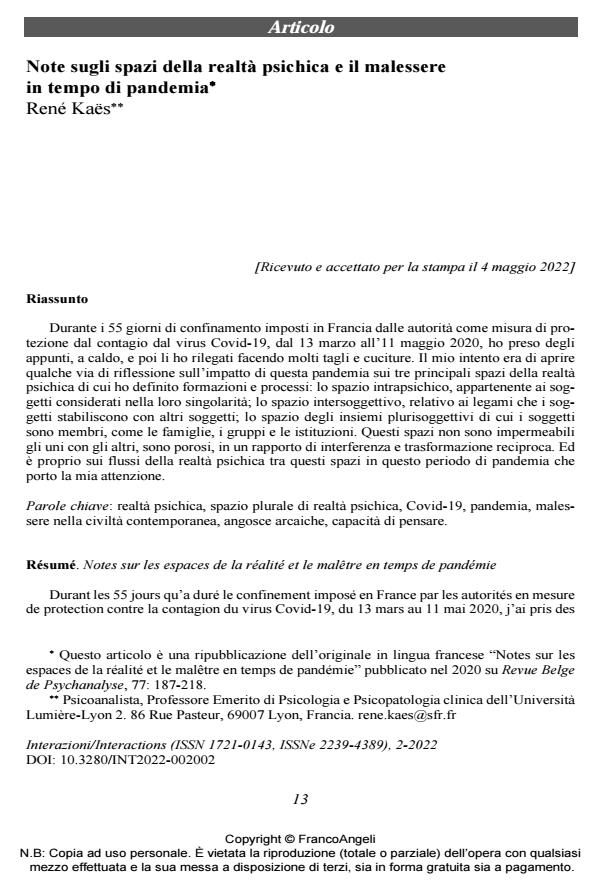Notes on the spaces of mental reality and unease in times of pandemic
Journal title INTERAZIONI
Author/s René Kaës
Publishing Year 2022 Issue 2022/2
Language Italian Pages 29 P. 13-41 File size 251 KB
DOI 10.3280/INT2022-002002
DOI is like a bar code for intellectual property: to have more infomation
click here
Below, you can see the article first page
If you want to buy this article in PDF format, you can do it, following the instructions to buy download credits

FrancoAngeli is member of Publishers International Linking Association, Inc (PILA), a not-for-profit association which run the CrossRef service enabling links to and from online scholarly content.
During the 55 days of detention imposed by the French authorities as a protective measure to control the spread of the Covid-19 virus, from 13 March to 11 May, I made notes and linked to several cuts and scars. It was my intention to open some lines of reflection on the impact of this pandemic on three major domains or spaces of psychological reality of which I characterized the formations and processes as follows: the intraspychic space of which I was dedicated to subjects in their singularity; these of the intersubjective, of the connections they make with other subjects; these of pluri-subjective ensembles such as families, groups and institutions. These spaces are not closed off, they are porous in relation to mutual influence and transformation. So it is the flux of the mental reality between these areas during the pan-demic that I focus my attention. In particular, she focuses on what seems to me to be the back-ground of the malaise in contemporary culture, an unease that affects both the ewhole and each of the psychic spaces separately. These notes reflect my preliminary and partial reflections on the spaces of mental reality and manifestations of malaise during this period of pandemic.
Keywords: mental reality, areas of psychic reality, Covid-19, pandemic, unease in contempo-rary society, archaic fears, ability of thought.
René Kaës, Note sugli spazi della realtà psichica e il malessere in tempo di pandemia in "INTERAZIONI" 2/2022, pp 13-41, DOI: 10.3280/INT2022-002002